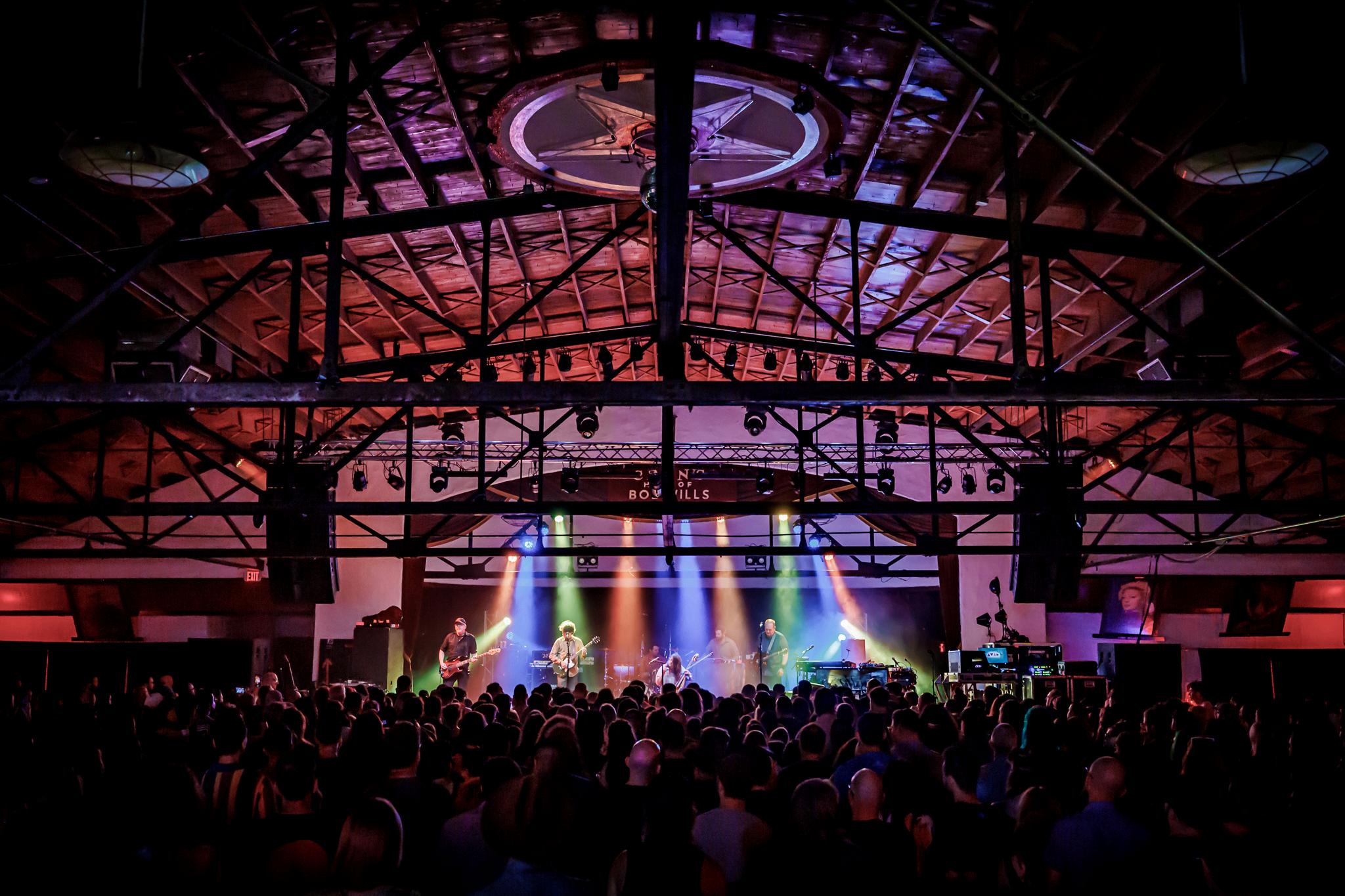

SUMMARY REPORT
June 2024







SUMMARY REPORT
June 2024




The 2024 Tulsa Music Census is a community-led initiative to gain a better understanding of the current needs of the Tulsa music community The Music Census ran from February 26-April 1, 2024 and received 1003 responses from people working in the music industry who are 18 years or older and living in the Tulsa Region This study was led and supported by the Tulsa Office of Film, Music, Arts & Culture, a division of Tulsa Regional Tourism
The Tulsa music ecosystem shows a balanced distribution across its three main sectors. Music Creatives make up the majority at 69%, followed by Industry at a healthy 21%, and Venue/Presenter at 10%. This composition indicates a strong presence of Creatives, with a substantial portion of Industry professionals contributing to the ecosystem.
Tulsa’s Creative respondents rely on local live performances and teaching for their income. Tulsa’s rising cost of living is a key concern for Creatives, coupled with stagnant pay rates. Venue/Presenter respondents are primarily live music venues (16%), independent promoters (13%), and hybrid performance spaces (12%). Together, Venue/Presenter respondents host an average of 51 live events annually, contributing to a total of 3,028 live events each year. Industry respondents in Tulsa are working as event/venue workers (21%), followed by roles in music marketing (16%) and music development (13%)
43% of respondents work in another creative field Valuable initiatives include more varied venue sizes (63%) and recorded music assistance (64%) To stimulate local audience interest, 86% believe increasing awareness is crucial, followed by more local music in public spaces (79%) Tulsa's music community demonstrates a strong interest in professional development, particularly in booking, event production, and marketing strategies
Talent costs and marketing production are significant challenges for 68% and 43% of Venue/Presenter respondents, respectively Tax discounts and incentives for live music are highly preferred by 83%, with strong support for a dedicated regulatory webpage (72%) and a government advocate (61%).
The average household income for respondents is $71K, and income directly from music activities averages around $18K per respondent per year or 26% of their total annual earnings. This underscores music as a significant but not primary source of income for most involved. 59% of respondents are paid independently, 21% receive wages from employers, and 20% are unpaid. 70% have jobs outside music, with 87% of those relying on these external jobs for their primary income.
While 45% of respondents are not struggling with affordability challenges, many highlight significant financial pressures. The increasing cost of living is a top concern for Creative respondents, with 72% marking it as a high concern, and 65% troubled by stagnant pay rates Housing costs have risen for 29% of all respondents in the past three years, with 11% finding their current housing costs exceed 30% of their household income 76% of respondents prefer a smoke-free environment, 78% have health insurance, and 53% own their homes
The Tulsa music ecosystem offers mainly positive experiences -- overall, all experiences rank higher than 50% on the positive side The Tulsa music ecosystem challenges are elitism and ageism The Tulsa music ecosystem’s greatest strengths are that it is non-homophobic, safe, and inclusive
This report and the online dashboard available at www.VisitTulsa.com offer more in-depth data, insights, and opportunities to understand, support, and grow Tulsa’s music ecosystem and all the benefits it offers culturally and regionally.


The 2024 Tulsa Music Census is a community-led initiative to gain a better understanding of the current needs of the Tulsa music community. The Census captures key information about the Tulsa music economy to help the city and community make more informed, data-driven decisions to support the music ecosystem.
The 2024 Tulsa Music Census was administered by Sound Music Cities (SMC) a leading Austin-based provider of music ecosystem studies and music census work. This study was led and supported by the Tulsa Office of Film, Music, Arts & Culture, a division of Tulsa Regional Tourism, as well as support from local partners. The study was open to all people working in the music industry in any capacity who are 18 years or older and living in the Tulsa region Tulsa joined a multi-city cohort program administered by Sound Music Cities which meets monthly to discuss best practices on improving music industries on a city level The cohort program allows Tulsa to gain insight from other cities conducting similar research.
This summary report has been prepared by Sound Music Cities and includes an overview of the Music Ecosystem Health Assessment based on 10 key indicator areas. The report includes key findings and recommendations. Alongside this report, Sound Music Cities has provided access to an online dashboard where you can find more data at www.VisitTulsa.com.
Any strategy to support and grow a music ecosystem begins with a basic understanding of its population Professional music communities are not easily discoverable using traditional methods (such as through labor statistics or economic data). A music census collects key data points to better understand music people and their economic activity within a specific geography It provides a baseline for policymakers and the larger community to understand and take action
The value of a music census goes well beyond the data itself Such initiatives ignite a range of activities that are conducive to more strategic and sustainable support for local music scenes over the long term, beginning with validating this economically marginalized group, sharing new learning, activating civic and community resources, and ultimately empowering music people to take ownership of change initiatives.

1003 responses February 26-April 1, 2024 10% venue/presenter 21% industry 69% music creatives




The 2024 study was led by Tulsa Office of Film, Music, Arts & Culture, a division of Tulsa Regional Tourism, as well as support from local partners. This study took a grassroots approach that engaged local partners who hold the relationships with music people. Community Partners served as the primary means of outreach to music people and these organizations were instrumental in shaping the Census itself.
Thank you to our amazing Business Community Partners.
American Song Archives
Arts Alliance Tulsa
Bandelier
Big Joe Muse Band
Blind Oath BOOKS!
Casa de la Cultura
Chamber Music Tulsa
Cherokee Film
Church on the Move
Cimarron Breeze Concert
Crow
Diabolical Productiond DiscFunktionDjZ GROUCHO
Harvest Fest
Healing Harmony LLC
Hi-Fi Hillbillies
Historic Big 10 Ballroom
Joesf Glaude Group
Kevin Kerr Industries
King Cabbage Brass Band
Larry White Management
Lava Sound Studios
Legacy Entertainment Group
Marshall Brewing Company
Mass Movement Community Arts
Noise Town Tulsa
Oak View Group
Oklahoma Film + Music Office
Oklahoma Music Cafe PR
Outlaw Devils
Phil Clarkin Photography
Philbrook Museum of Art
Picture It Productions & Procure Distributing
Pop House
Powell Music Co
Radio Flash
Randy Ess Band
Red Dirt Rangers
Redeemer Church
Retro Rockets & Flamenco Tulsa
RocKFiscH
Rose Rock Mobile Music Lessons
SJS Hospitality Hotels
Skald Records
Studio Records Tulsa
The Audio Planet
The Blues Society of Tulsa
The Church Studio
The Closet Studios
The GBD Trio
The Lonelys
The Music Store Inc
The Tiger’s Eye
The Vanguard Tulsa
The Venue Shrine
The Whittier Bar
TooMuchButter Club
Tripthefan
Tulsa Area Piano Services
Tulsa Creative Engine
Tulsa FMAC
Tulsa Guitar Company
Tulsa Opera Signature Chorale
Tulsa Rocks video podcast
Tulsa Symphony Orchestra
Twisted Arts
Ty Smith &The Minor Offenses
Voth Music
Water From The Rock Productions
Whirligig WOMPA
Thank you to our amazing Individual Community Partners.
Aaron Morton
Andrea Esparza
Andy Tellman
Arthur Zachary
Camille Stottlmyre
Carla Haddox
Cheyenne Effinger
Cody Dinsmore
Dovihon Vega
EMANI

Eric Strauss
Ghostly Hogan
Hannah Ballou
Ingard Curtiss
Jack Brassfield
James McCool III
James Ragan
Jane Maxey
Joe Freitus
Joe Tho
Julie Watson
Julier Mallon
Keiden Ballou
Kiegan Ryan
Kylie Wells
Madison Riggin
Matthew Edwards
Michael Moberly
Mike Pool
Mojo Kings
Most Kudos
Randy Wimer
Rebecca Hughes
Ron Morgan
Steve Beard
Tanner Smith
Tequila Kim
Tim Cunningham
Timmothy Kassen
Timothy Ridge
VideoMike

The Tulsa music ecosystem shows a balanced distribution across its three main sectors. Music Creatives make up the majority at 69%, followed by Industry at a healthy 21%, and Venue/Presenter at 10%. This composition indicates a strong presence of Creatives, with a substantial portion of Industry professionals contributing to the ecosystem.
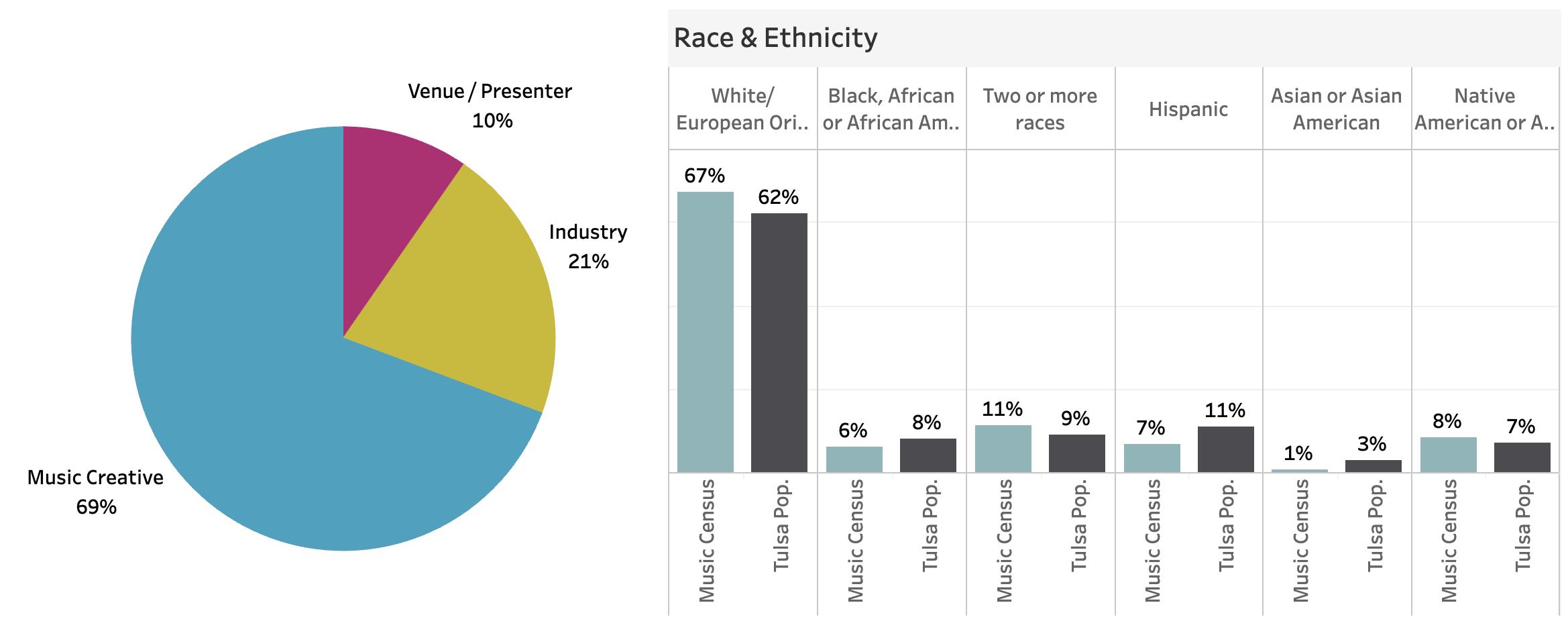
Race & Ethnicity - Respondent data indicates that the Tulsa music ecosystem has a higher proportion of individuals identifying as White/European Origin and Native American or Alaska Native compared to the overall Tulsa population Conversely, the representation of Black or African American, Hispanic, and Asian or Asian American individuals is lower in the music census than in the general population The percentage of those identifying as two or more races in the music census is slightly above that of the broader Tulsa community
Experience - The Tulsa music ecosystem shows a diverse range of experience levels across its sectors The Industry sector features a balanced mix of seasoned professionals with over a
decade of experience and a significant influx of newcomers with less than three years in the field, indicating a healthy growth and renewal. The Music Creative sector is predominantly composed of 10+ years experienced individuals, showcasing a strong foundation of veteran talent The Venue/Presenter sector also has a majority of long-term professionals but includes a notable proportion of newer participants, reflecting a healthy blend of established and emerging talent




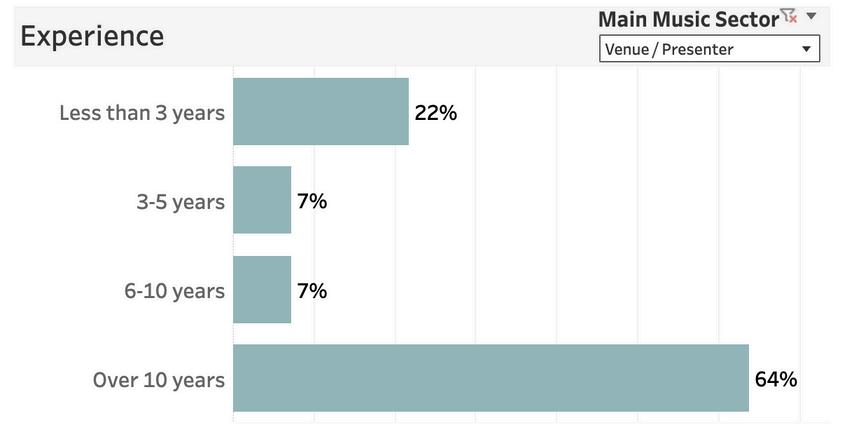


Gender - The gender distribution across Tulsa's three music sectors shows distinct patterns In the Creative sector, there is a strong male majority. The Venue/Presenter sector also has a higher proportion of males, though the difference between male and female representation is less pronounced. Conversely, the Industry sector displays a more balanced distribution, with females slightly outnumbering males. This sector also includes a small percentage of respondents identifying as transgender or using different gender terms, reflecting some diversity in gender identity within this group
Sexual Orientation - The Tulsa music ecosystem displays a diverse range of sexual orientations among its respondents The majority, 78%, identify as heterosexual or straight Bisexual individuals make up 10% of the respondents, indicating a notable presence within the community. Those who identify as gay or lesbian represent 3%, and an additional 3% identify as something else not specified. Meanwhile, 7% of respondents prefer not to disclose their sexual orientation. This data highlights the varied sexual orientations present within the Tulsa music ecosystem, with a substantial portion of the community identifying outside of the heterosexual norm






Creatives - The majority of Creative respondents in the Tulsa music ecosystem (79%) are confident about continuing to work in music over the next three years, with a strong 79% responding "Definitely Yes " However, there is less certainty about staying in Tulsa, as only 46% responded "Definitely Yes" to living in Tulsa in three years While many are committed to their music careers, fewer are sure about their long-term residence in Tulsa
Venue/Presenter - The majority of Venue/Presenter respondents in the Tulsa music ecosystem (87%) are confident about continuing to work in music over the next three years, with 64% responding "Definitely Yes " However, there is less certainty about staying in Tulsa, as only 48% responded "Definitely Yes" to living in Tulsa in three years This indicates a strong professional commitment to the music industry, but a lower level of certainty about long-term residence in the city.
Industry - The majority of Industry respondents in the Tulsa music ecosystem (72%) are confident about continuing to work in music over the next three years, with 49% responding "Definitely Yes." However, there is less certainty about staying in Tulsa, as only 40% responded "Definitely Yes" to living in Tulsa in three years. This indicates a strong professional commitment to the music industry, but a lower level of certainty about long-term residence in the city.




I love how supportive and open the DIY community is here
Tulsahasastronganddiverse musicalhistorythatcouldbeusedto strengthenthecurrentmusicscene
Tulsa has an eclectic music scene.
We are a place for original music
Across genres and across generations Tulsa has made original music a priority
IthinkTulsatendstopigeonholeitself asthisthingorthatthing Butthetruth iswe’reavibrant,raucousscenethat mostpeoplehavenoideaexists

Tulsa’s Creative respondents rely on local live performances and teaching for their income. Tulsa’s rising cost of living is a key concern for Creatives, coupled with stagnant pay rates. Creative respondents in Tulsa spend an average of $6,959 annually on music-related expenses, highlighting a significant investment in their careers that also yields a collective spend of over $5M annually of which 49% stays local.
Income - The primary sources of income for Tulsa creatives are local live performances and teaching. Local live performances are a major source of income for 43% of respondents (9% all, 34% most), while teaching is a major source for 10% (2% all, 8% most). Recordings and live performance touring are significant minor sources of income, with 36% and 31% of respondents respectively earning some or very little from these activities. Merchandise, songwriting, and studio work are less commonly reported as major income sources, with many respondents (49%, 50%, and 55% respectively) reporting no income from these activities.
"Thereareskilledmusiciansperforming locallyandtouringthatarecommittedto Tulsamusichavingarecognizablesound thatbelongsspecificallytothiscity
Tulsa is a great town to start a band, not so great to make a decent living

Career Concerns - Tulsa creatives have several notable career concerns. The most significant is the increasing cost of living, with 41% rating it as their highest concern. This is followed by pay rates not increasing, which 34% of respondents highlighted as a top issue
A lack of music work is also a major concern for 28% of creatives
Additionally, lack of time for creativity and increasing music-related expenses are highlighted by 15% and 10% of respondents, respectively

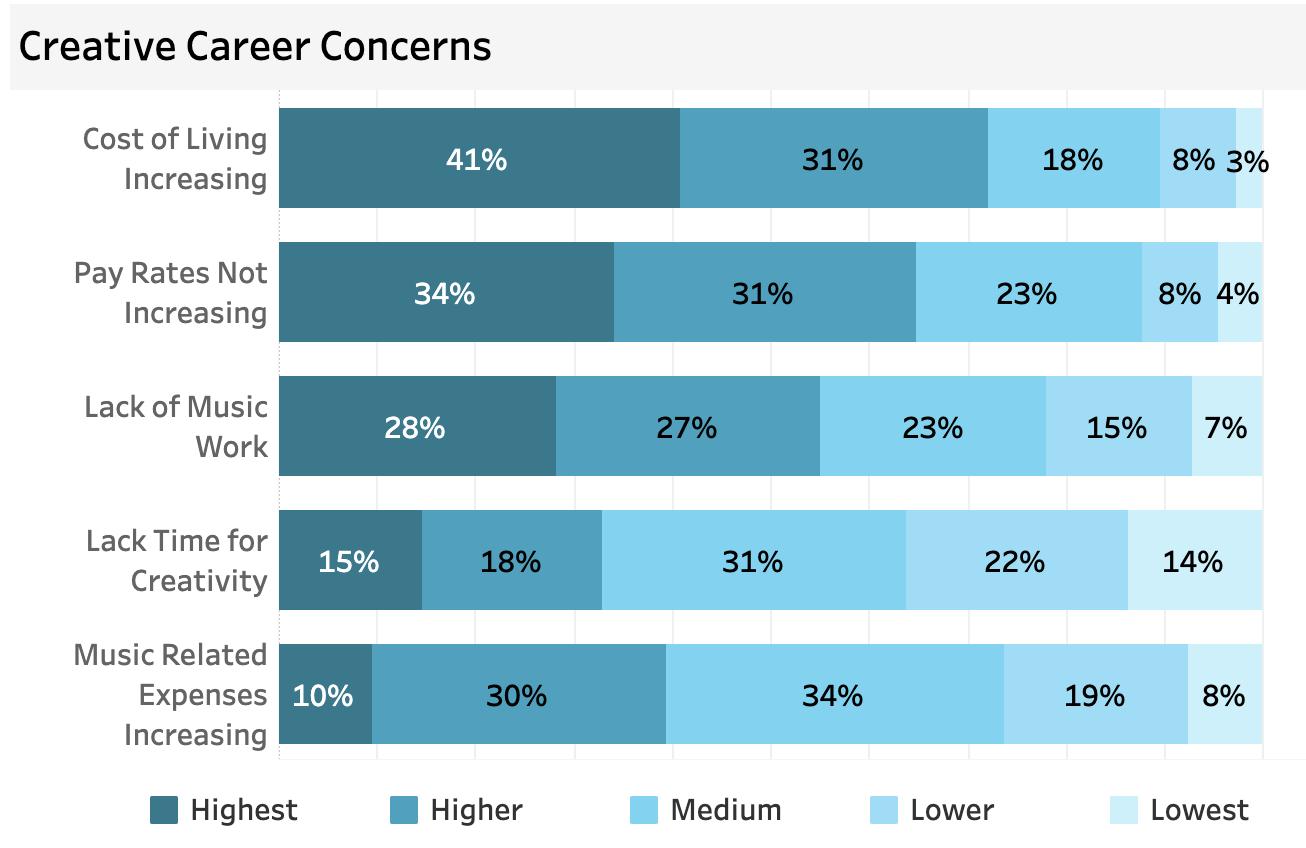

Spend - Creative respondents in Tulsa spend an average of $6,959 annually on music-related expenses, highlighting a significant investment in their careers The breakdown indicates that the highest costs are for gear rentals and recording, averaging $1,649 and $1,572 respectively Rehearsal or workspace expenses account for $1,017 annually, while promotional activities cost $882. Merchandise and supplies expenses are $869 and $699, respectively, and accounting/legal fees are the lowest at $272. This substantial spending underscores the critical role of Tulsa's creative industries in bolstering the local economy through their financial commitments to various services and products.

Home Use for Music Work - Creatives use their homes for music related activities: 33% for home studios, 30% for equipment storage, 19% for rehearsals and 6% for live performance
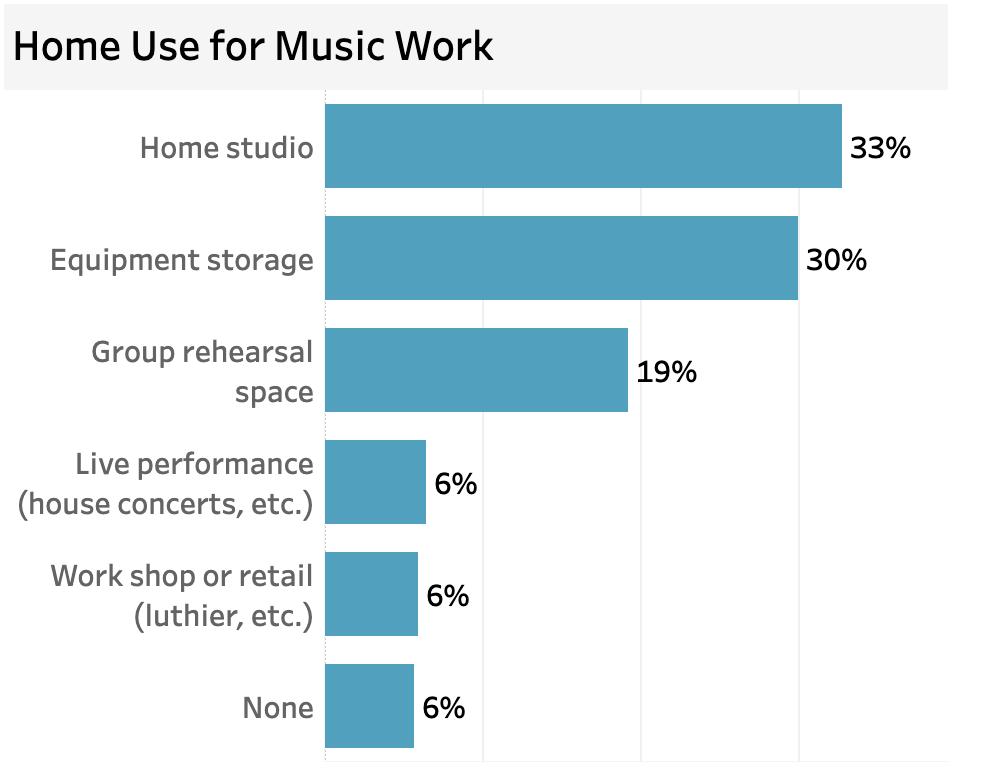

$6,959
Average Creative Spend
$5M
Total Creative Respondents Spend Annually
49% Spent Locally
It is somewhat difficult to penetrate the small, elite circle of Tulsa musicians
I love that the musicians work together in various bands, rotating, covering for one another, including each other in shows.
The amount of talent in Tulsa is incredible Everyone being nice and inclusive helps everyone

Tulsa's Venue/Presenter respondents are primarily live music venues (16%), independent promoters (13%), and hybrid performance spaces (12%). For-profit locally owned venues dominate the ownership structure at 42%, followed by nonprofit venues (26%) and informal setups (19%). Most venues (57%) accommodate 1-100 people, highlighting a need for more mid-sized and larger venues. Together, respondents host an average of 51 live events annually, contributing to a total of 3,028 live events each year.
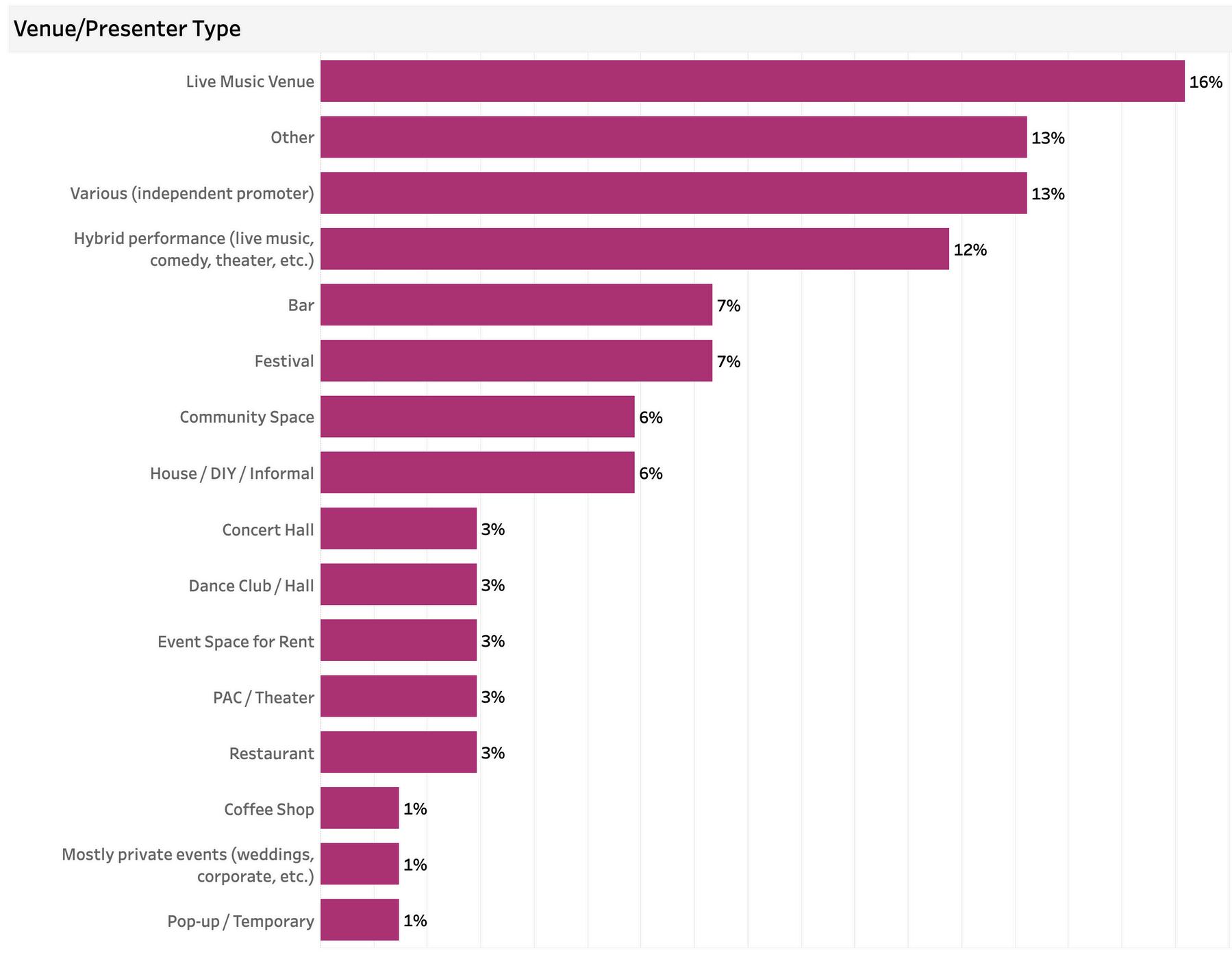
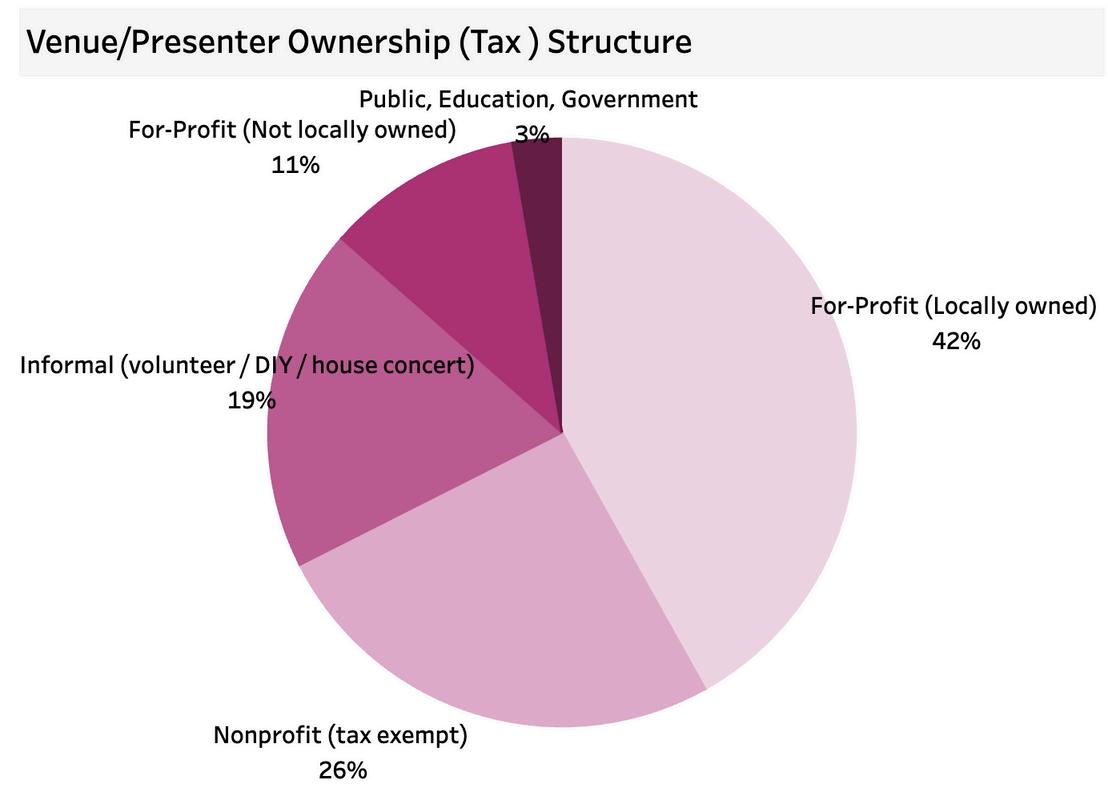

Venue Ownership/Tax Structure - The largest category of venue/presenter ownership in Tulsa is for-profit (locally owned) venues, making up 42% of the total. Nonprofit (tax-exempt) venues account for 26%, followed by informal (volunteer/DIY/house concerts) at 19%. For-profit (not locally owned) venues constitute 11%, and public, education, and government-owned venues represent 3%. This distribution highlights a strong presence of locally owned for-profit and nonprofit venues in Tulsa's Venue/Presenter sector.

Venues are so loyal to their bands that they don't give outside bands a shot to play.
Venue Capacity & Outdoor Capabilities - In the Tulsa music ecosystem, venue capacity spans a broad range, with a significant focus on smaller venues The majority of venues (57%) accommodate 1-100 people, while mid-sized venues with capacities of 101-200 and 201-350 each represent 17% of the total. Larger venues with capacities of 351-500 and 501-1000 each constitute 4%, and there are no venues with capacities of 1001-3000. This distribution highlights a need for more mid-sized and larger venues, a sentiment echoed in community comments
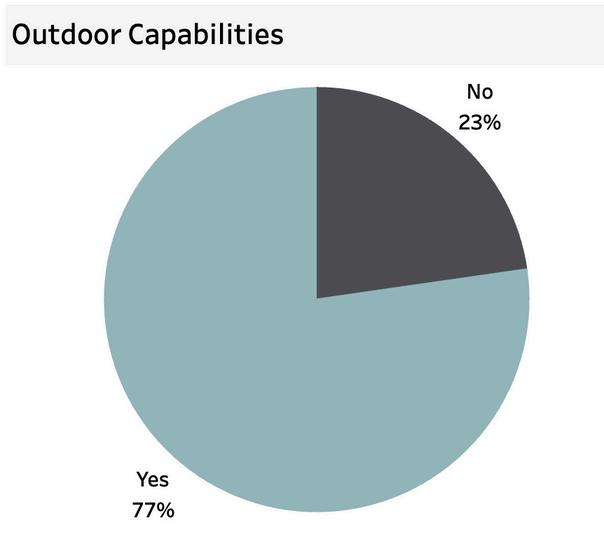

Industry respondents in Tulsa are working as event/venue workers (21%), followed by roles in music marketing (16%) and music development (13%). The gender distribution shows a higher representation of females at 54%, compared to 45% males. The industry primarily serves local clients.

Industry Occupation - The majority of respondents work as event/venue workers (21%), followed by roles in music marketing (16%) and music development (13%) Production support (12%) and music media (9%) are also notable occupations Other roles include recording (7%), agents and business services (5%), label/distribution (4%), music publishing (4%), and public sector (4%)
Gender - The gender distribution in Tulsa's industry respondents shows a higher representation of females at 54%, compared to 45% males, which is significant as most music ecosystems are male dominant. 2% of respondents preferred not to disclose their gender I wish there was more of a structure in the music scene to allow opportunities for musicians to collaborate and connect with industry professionals
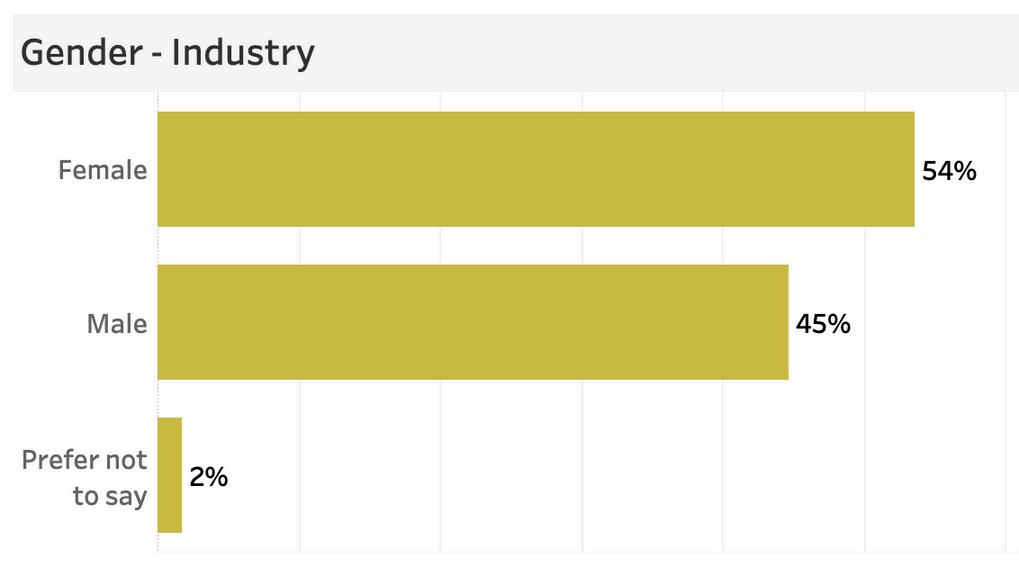
Embracing the newer people in the industry. Pulling people up front the top if you see greatness in someone Making them “earn their stripes


Creative Access to Industry - There is a strong DIY trend in accessing music industry services in Tulsa, with respondents largely handling management (77%), booking (75%), and publicity social (84%) themselves. Local resources play a significant role primarily in studio needs (41%), merchandise (36%), and equipment (32%). Other than publishing and licensing (25% non-local), there's minimal use of non-local providers across other services. This trend highlights the selfreliant nature of Tulsa's music creatives, with a notable preference for utilizing local resources when external assistance is needed
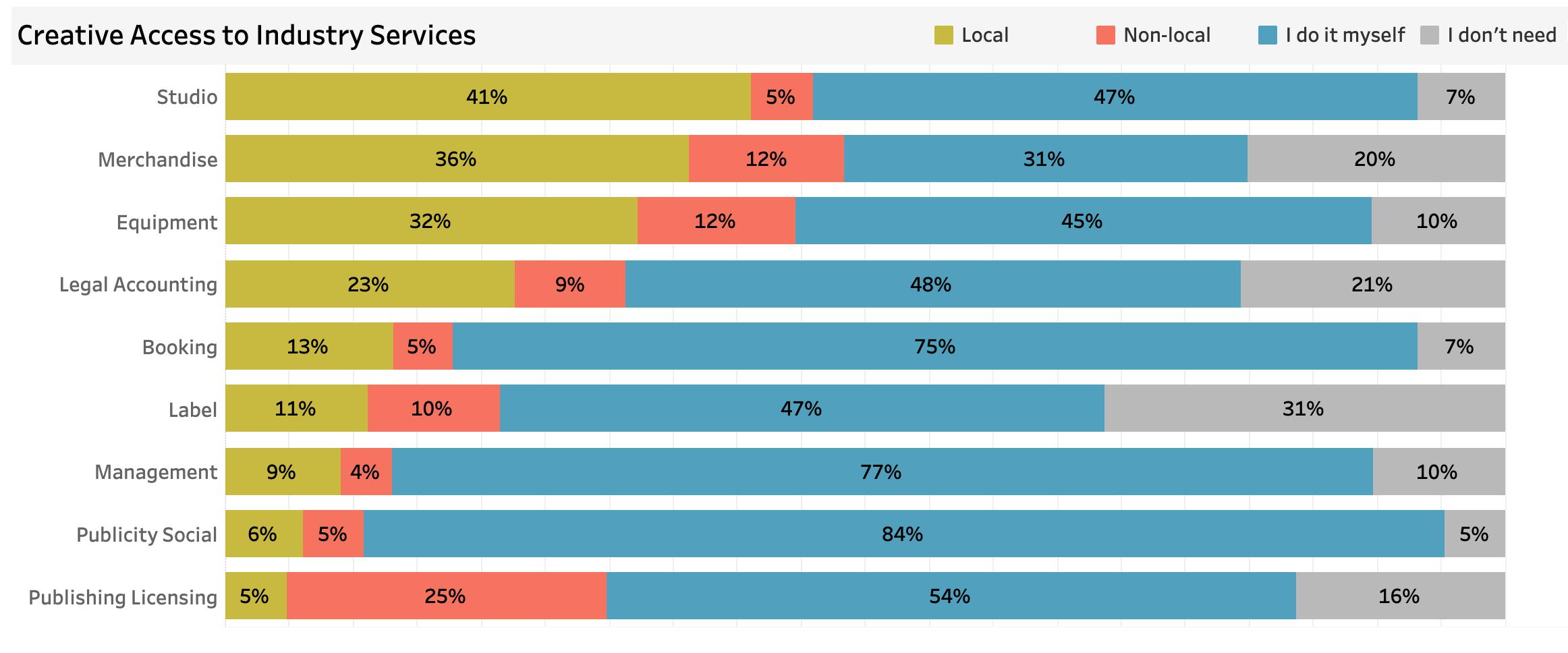
doing it all ourselves - need representation and someone able to help grow our band, unionization, going rates, options, ability to understand and work within the market- it's the wild west on the art scene for sure!
The most needed thing Tulsa needs now is some kind of artist management/Tulsabased record label who can consolidate all of the creatives who are doing everything themselves
Location of Clients - Industry is serving primarily local clients A significant portion, 30%, of the music industry serves 100% local clients Across the majority of the industry client base, 67% are local, 30% are national, 7% international This distribution highlights a strong local focus with notable national and some international reach


Music generates a total of $18.5M in income annually across all respondents
26% of respondent annual income comes from music
Average household income for respondents is $71K
Average annual income from music is $18K/respondent

Music generates a total of $18.5M in income annually across all respondents, with 26% of their income coming from music activities. Average pay rates for performances are healthy with local performances paying respondents more ($400/performance) than touring ($354/performance). Performance opportunities for respondents are limited, with 51% reporting one or less local gigs per month, and 51% do not have any touring gigs. Music professionals in Tulsa predominantly earn through independent or direct payments (59%), with 70% working outside the music industry to secure their primary income. Nearly half of the respondents hold intellectual property rights, but many do not collect royalties, and a significant portion outsource their licensing activities.

Music Job Type/Compensation - 59% of professionals earn through independent or direct payments, 21% receive wages from employers, and 20% are unpaid 56% are freelancers (solo musicians or sole proprietors), 38% work in bands, 25% are part of registered businesses, and 23% are owners or coowners Additionally, 15% work in places with six or more full-time employees, 14% are music educators or teachers, and 10% do not have a managerial role This highlights a predominance of freelance and independent work, with many professionals relying on multiple job types for income.
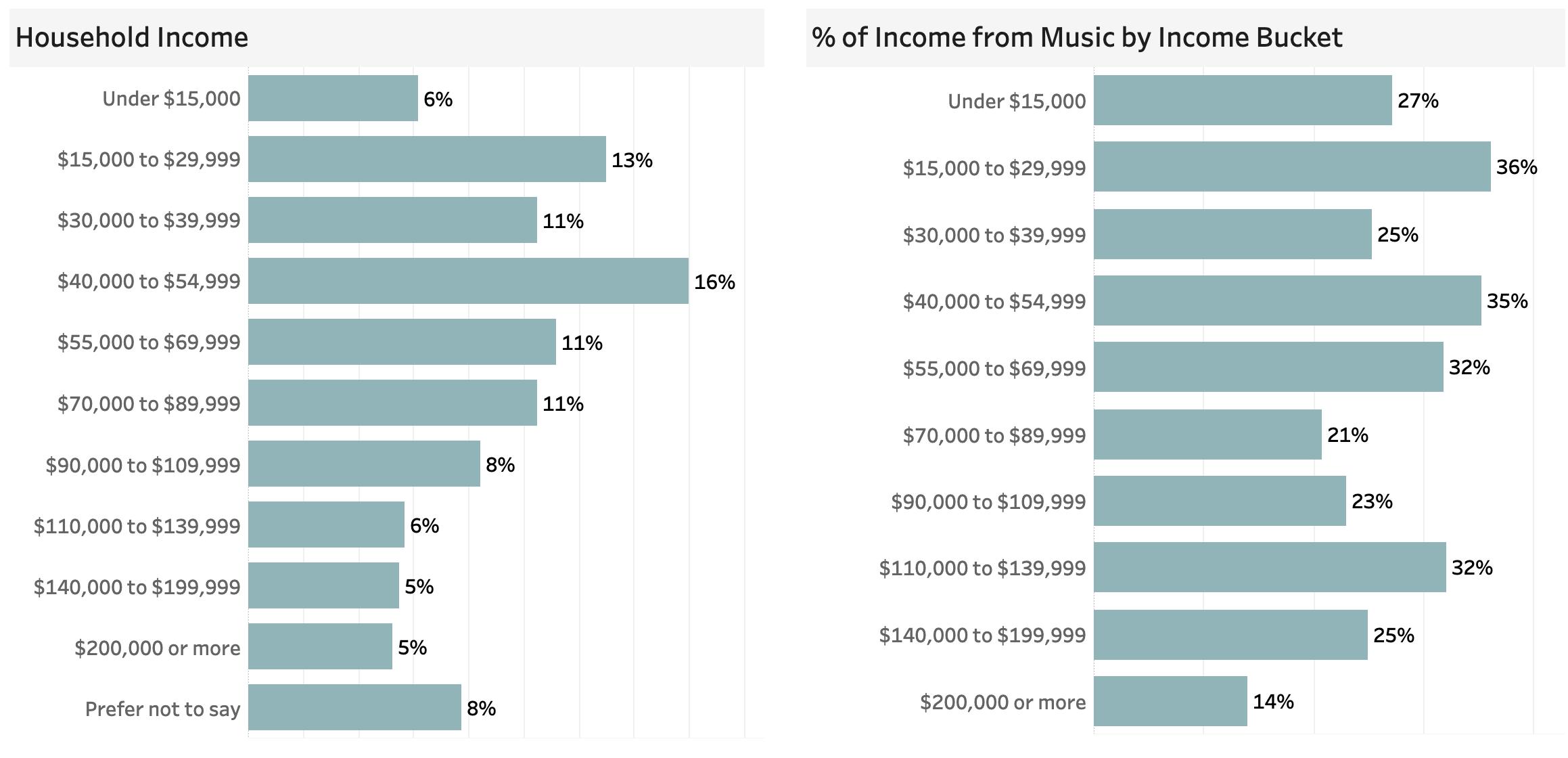


Work Outside Music - The financial dynamics of individuals working in the music industry, 70% of music professionals have jobs outside the music industry Among those who work outside music, 87% state that their outside job provides their primary income This indicates a significant dependency on non-music-related employment for financial stability
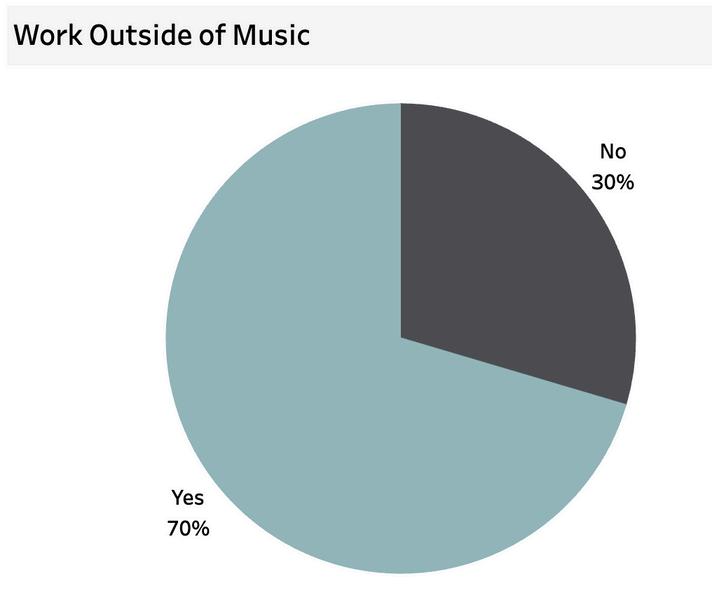

In Tulsa, it seems one must have a primary job to support one’s job in the music industry I’m not sure it would be possible to have music as one’s primary source of income

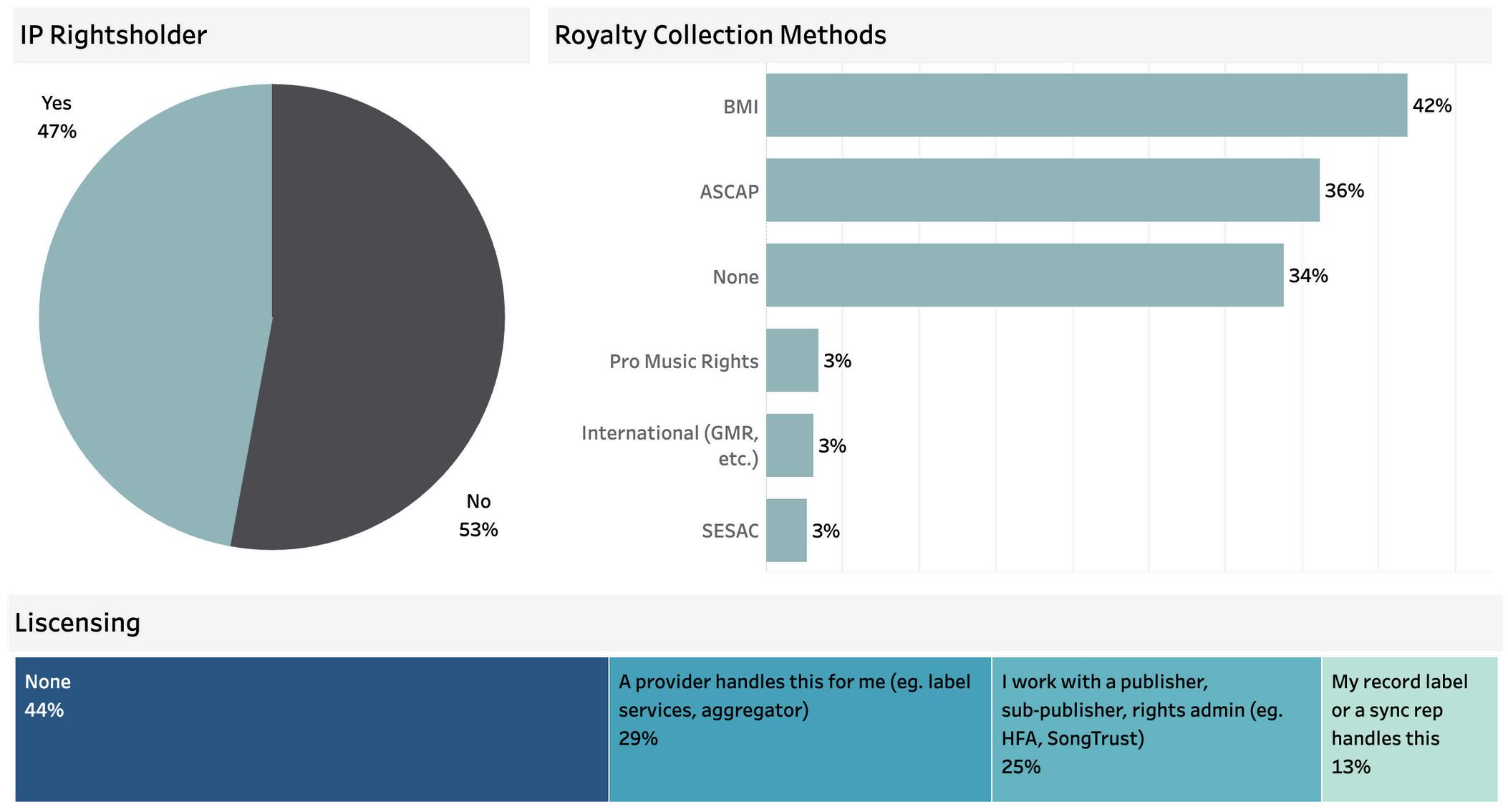
Publishing/Licensing - Of the respondents, 47% hold intellectual property (IP) rights, while 53% do not. Among those with IP rights, 34% do not collect royalties. For those who do, 42% use BMI, 36% use ASCAP, and smaller percentages use other methods such as Pro Music Rights (3%), international services (2%), and SESAC (1%) Regarding licensing, 44% do not engage in any licensing activities Of those who do, 29% rely on a provider, 25% work with a publisher or rights administrator, and 13% have their record label or a sync representative handle it This indicates that many music professionals outsource their licensing tasks

Creative Performance Frequency & Pay - A substantial portion of music professionals in Tulsa have limited paid performance opportunities. For local performances, 27% of respondents report having no shows per month, while another 27% have 2-3 shows per month A small fraction, 12%, perform 4-6 shows per month, and even fewer (5% and 7%) have 7-10 or 10+ shows, respectively Touring performances are even less frequent, with 51% having no shows and only 19% performing once per month The average pay per local performance is $400, whereas touring performances average slightly less at $354 per gig

Venue/Presenter - Respondents average 51 events per year for a total of 3,028 events annually. 57% feature local headliners, and 68% book all or most local acts as headliner support
Venuesaverage
51 liveevents/year
3,028 totallive events/year


$400 average pay/local gig
$354 average pay/touring gig
Musicians are, for the most part, paid terribly and not treated with the level of respect they deserve here in Tulsa
More frustrated with having little time to develop as a musician due to high cost of living/childcare and having to work primarily at a different job. I think this stifles lots of creative people and keeps them stuck in 9-5’s
There seems to be no money for music in Tulsa, despite the talent and the large number of self-motivated support professionals doing their best while bootstrapping
Old model remains in place for venue/performer Same old system(s) Attempts to disrupt this system are challenging Need a different approach and model and messaging to attract audiences to live shows More must be done in this market to enrich the ecosystem and provide opportunities for creatives and those that love music to connect



Local Music Resource Preferences
66% desire a place to connect with music industry services
56% want to connect with other creative industries like film, design, and tech 52% seek spaces for musical collaboration
More opportunities for less experienced hands to break into the business Need more peer support

Tulsa music ecosystem respondents highlight a demand for better connectivity and resources. 66% of respondents want connections with music services, 56% want to connect with other creative industries, and 52% desire spaces for musical collaboration. For Venue/Presenter resources, 80% prioritize audience development tools. Financial assistance is lacking for 83% of respondents, with a preference for micro-grants (61%) and tax breaks (55%). 43% work in another creative field. Valuable initiatives include more varied venue sizes (63%) and recorded music assistance (64%). To stimulate local audience interest, 86% believe increasing awareness is crucial, followed by more local music in public spaces (79%). Copyright (c) Sound Music Cities, LLC 2024.
Having to work 3-5 jobs and be your own lead singer/songwriter manager booker social media manager graphic designer etc.
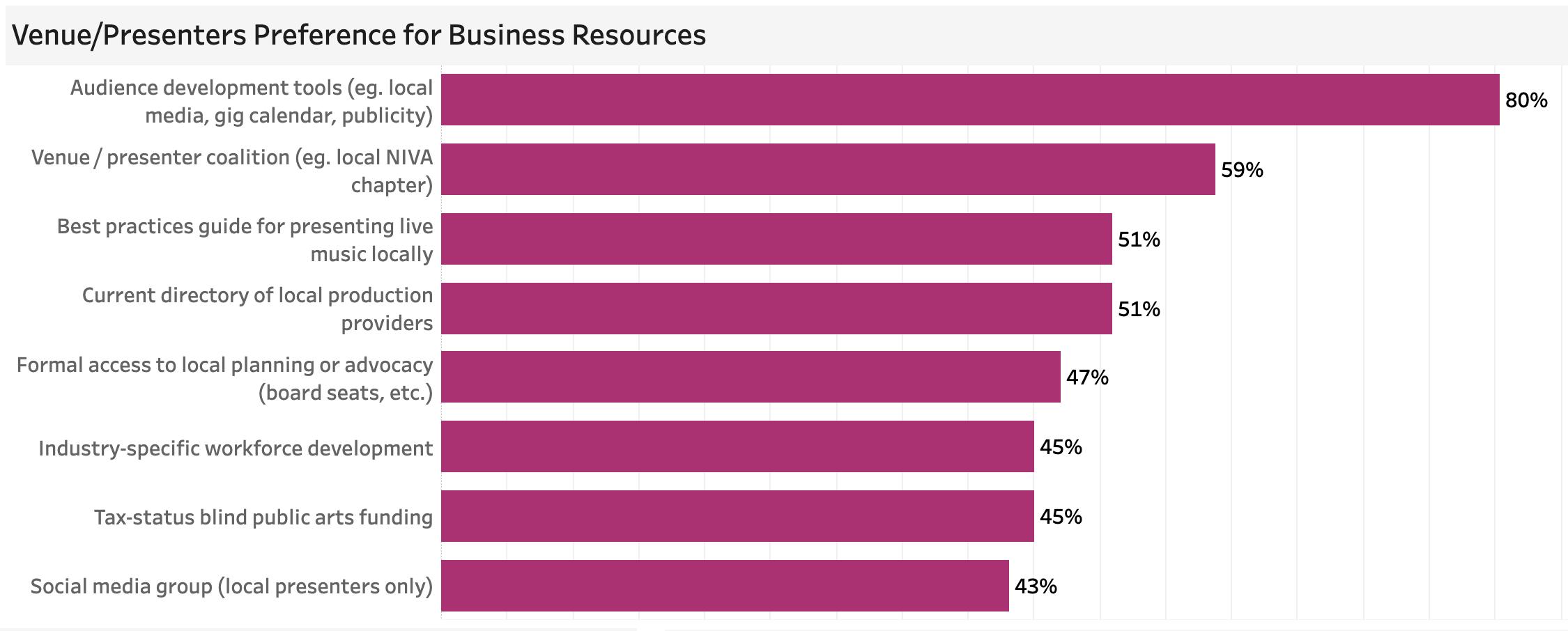
Venue/Presenter Business Resources - The data on Venue/Presenter business preferences show that 80% prioritize audience development tools (media, gig calendars, publicity) A Venue/Presenter coalition is important to 59%, and 51% seek both a best practice guide for live music and a directory of local production providers Additionally, 47% want formal access to local planning/advocacy, 45% seek industry-specific workforce development and public arts funding, and 43% value a social media group for local presenters.

Financial Support - 83% of respondents have never received financial assistance Among those who have preferences for financial assistance, 61% favor micro-grants with less oversight, 55% prefer tax breaks, and 44% appreciate discounted or no-cost services such as tax preparation and legal assistance Larger grants with more oversight are preferred by 37%, low-interest loans by 25%, and 19% are not interested in financial assistance.
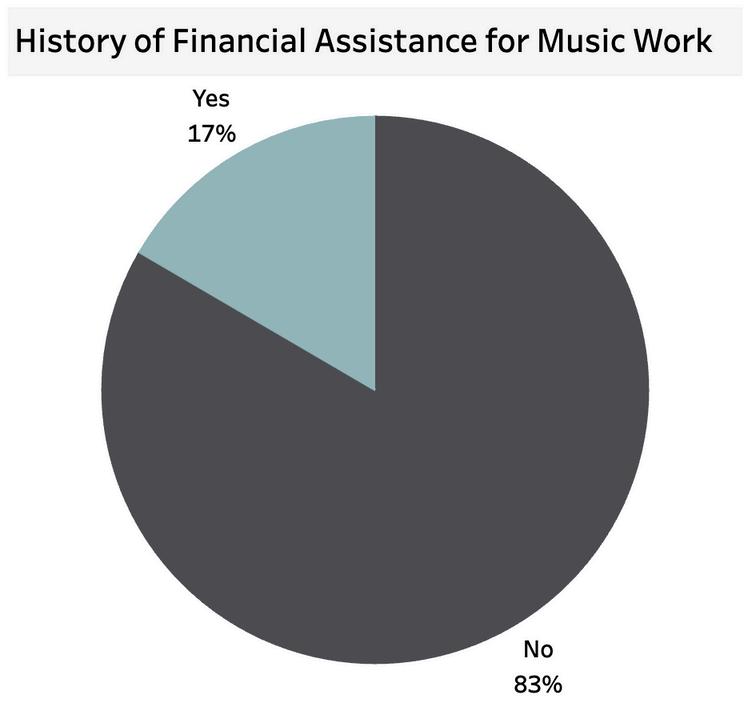

Initiatives Valuable to Tulsa - The data on music initiatives in Tulsa highlights several key preferences among respondents. More venues of different sizes to attract touring entertainers are seen as the most valuable initiative, with 63% finding it definitely valuable. This is followed by recorded music assistance (64%), a music industry directory (58%), and a music export fund (54%). Professional development and workforce training are also valued, with 42% seeing it as definitely valuable Tulsa Music Month is seen as definitely valuable by 50% of respondents

There's an active underground music culture that gets little to no attention because there is no space for it The younger generation of performers has very poor opportunity to reach audiences because of changes in internet culture, such as the way people consume media

More opportunities for less experienced hands to break in the business Not myself, but lots of young ins want in and it’s tricky to break into.
Extreme gatekeeping, and only being supported when others have something to gain from it The best artists in Tulsa never get the time of day from the people they need to actually be seen It is extremely discouraging to see so many great artists give up because the scene doesn’t want them to succeed. Getting Tulsa music exported needs to be a top priority

Work in Another Creative Field? - Creative work outside the music industry in Tulsa shows that 57% of respondents do not engage in another creative field Among those who do, 15% work in film, AV, and broadcasting, and 11% in performing arts Other notable fields include advertising, marketing, communications, visual arts and crafts, design, and photography, each at 9% Additionally, 6% work in art schools or as artists/agents, 5% in creative technology and culture & heritage, 4% in literary, publishing, and print, and smaller percentages in gaming, fashion, architecture, and VR/AR/MR.
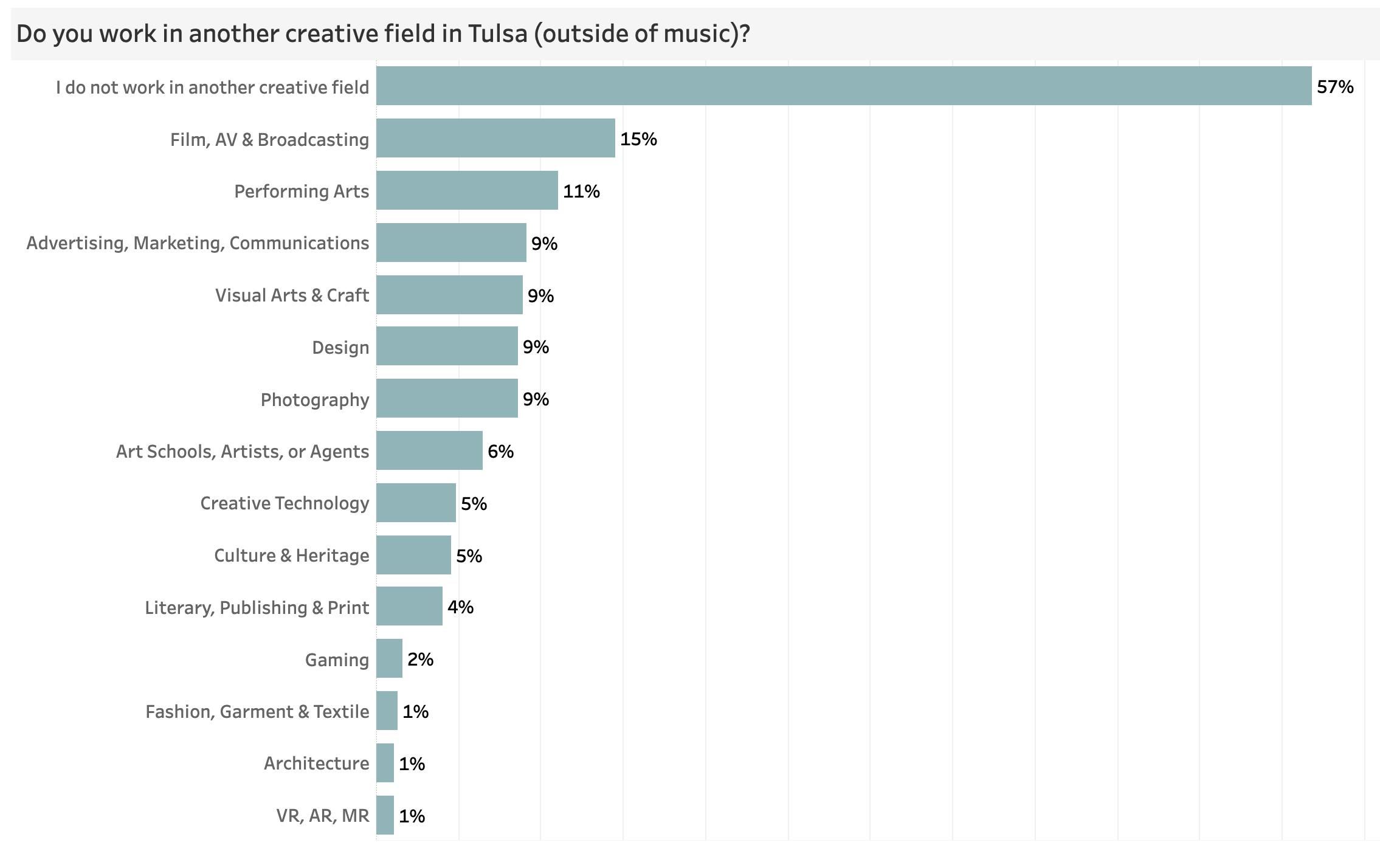
Stimulate Audience Interest - 86% of respondents believe increasing awareness would be most effective Additionally, 79% favor more local music in public spaces, while 67% think improving access would help Multi-genre presentations and patronage each received support from 58% of respondents More live music options closer to residential neighborhoods are preferred by 57%, and 54% see value in free or lower-cost tickets


It’s extremely difficult to get noticed by local publications, since we are without larger backing and are doing our shows as a public service We need more all ages venues and youth engagement
The scene will not continue to grow and thrive if the next generation isn’t involved

Tulsa's music community demonstrates a strong interest in professional development, particularly in booking, event production, and marketing strategies. The majority of respondents (64%) lack professional memberships, and most (70%) have over 10 years of experience.

Professional Development - Tulsa respondents show a strong interest in booking, promotion, and event production, as well as marketing, including social media strategies, both at 55%. Other key areas of interest include audio/video recording and engineering (48%), publishing and licensing strategies (47%), and music law and copyright (46%). Additionally, there is interest in new revenue streams or technologies (43%), label and distribution strategies (42%), and music localism and community advocacy (39%).
Experience - The data on overall experience among respondents indicate that a substantial majority, 70%, have over 10 years of experience in the music industry This suggests that the music community in Tulsa consists largely of highly experienced professionals
Wish there was less emphasis on social media marketing or other industry services and more on live performances
Local events should want to work with new, (NOT out of media school) as well as people fresh out of school with a music background

Professional Industry Associations - A significant majority of respondents (64%) have no memberships or registrations with professional organizations. Among those who do, 27% are part of royalty collection and music licensing organizations. Only 3% are members of The Recording Academy (Grammys).



While 45% of respondents are not struggling with affordability challenges, many highlight significant financial pressures. The increasing cost of living is a top concern for Creative respondents, with 72% marking it as a high concern, and 65% troubled by stagnant pay rates. Housing costs have risen for 29% of all respondents in the past three years, with 11% finding their current housing costs exceed 30% of their household income. Financial pressures on Creatives are further compounded by a lack of music work (55%) and insufficient time for creativity (46%). Venue/Presenters also face challenges, particularly with talent costs (68%), marketing production (43%), and post-COVID fan behavior issues (38%). 76% of respondents prefer a smoke-free environment, 78% have health insurance, and 53% own their homes.
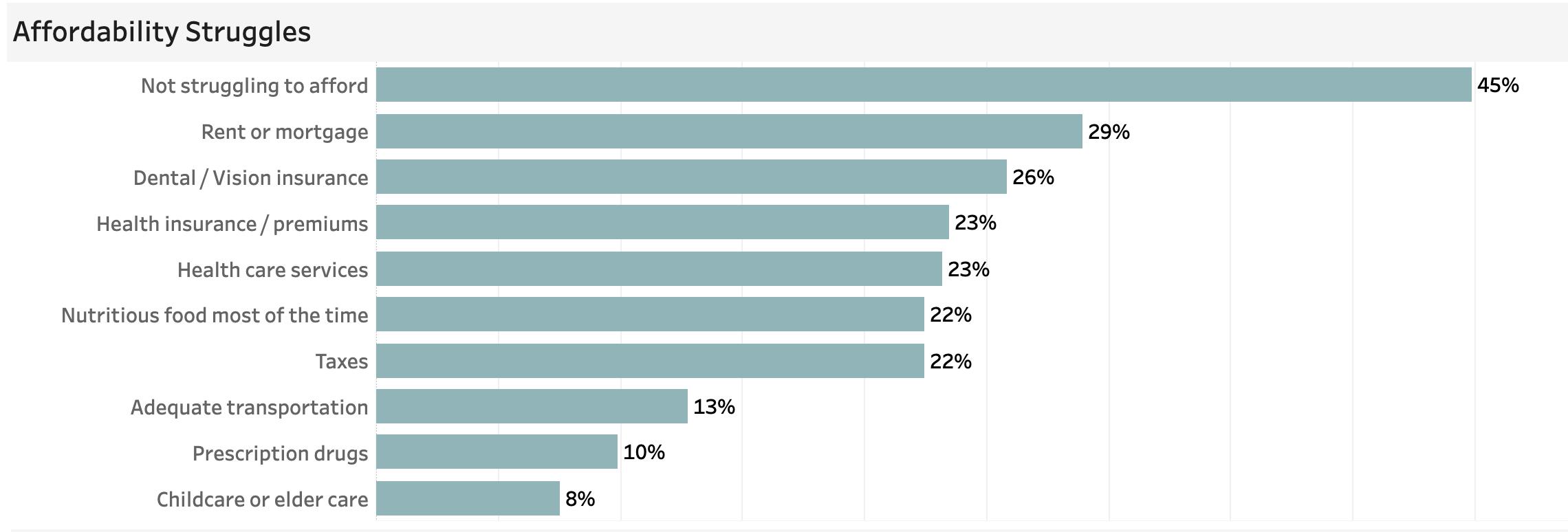
Affordability - 45% of respondents are not struggling to afford basic necessities However, 29% have difficulty affording rent or mortgage, and 26% struggle with dental or vision insurance Additionally, 23% face challenges with health insurance premiums and healthcare services Nutritious food, taxes, and adequate transportation each pose affordability issues for 22%, while prescription drugs are a concern for 10%. Childcare or elder care is the least reported struggle, affecting 8% of respondents.
Housing - 43% of respondents have experienced no changes in their housing situation. However, 29% have seen an increase in housing costs, and 23% have moved at least once locally. Additionally, 12% moved into the region from elsewhere, while 11% report that their housing costs exceed 30% of their household income. Smaller percentages have moved to control or reduce costs (8%) or would like to move but cannot find cheaper housing (7%). A small majority of respondents (53%) own their homes, while 37% rent. Additionally, 10% have some other type of housing arrangement.




Health Insurance - 78% of respondents have health insurance, while 21% do not, and 1% are unsure. Among those with coverage, 44% receive it from their current or former employer, 25% are covered by government programs like Medicaid or Medicare, 14% through a family member or their employer, and 11% pay for private policies. Additionally, 5% have other forms of coverage.
Smokefree - A significant majority of respondents (76%) prefer a smoke-free environment, while 24% do not have this preference.

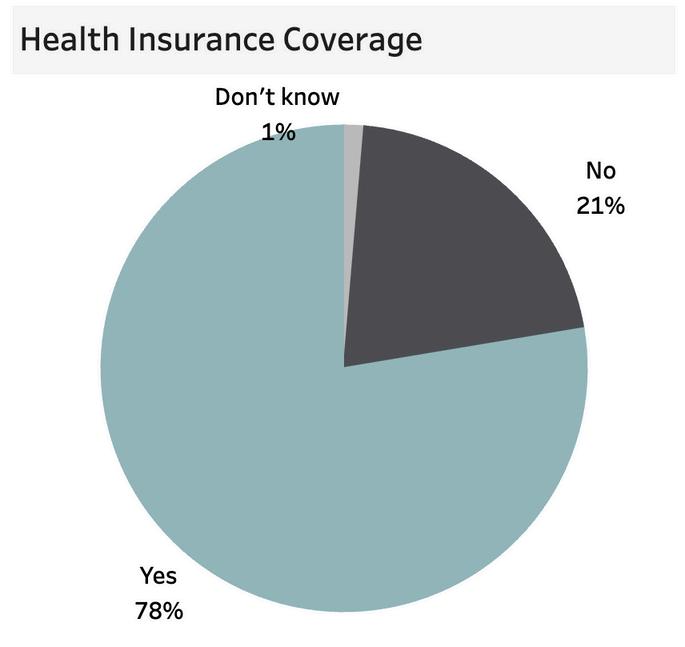
Too many blues bars that are smoking Oklahoma killing fields, smoke-filled venues, we bury a lot of musicians each year We need all venues to be smoke-free that we play in and for venue staff COPD and cancer run rampant in the musicians' world.
The end of smoking venues needs to happen Touring acts seem to avoid them and so do many fans
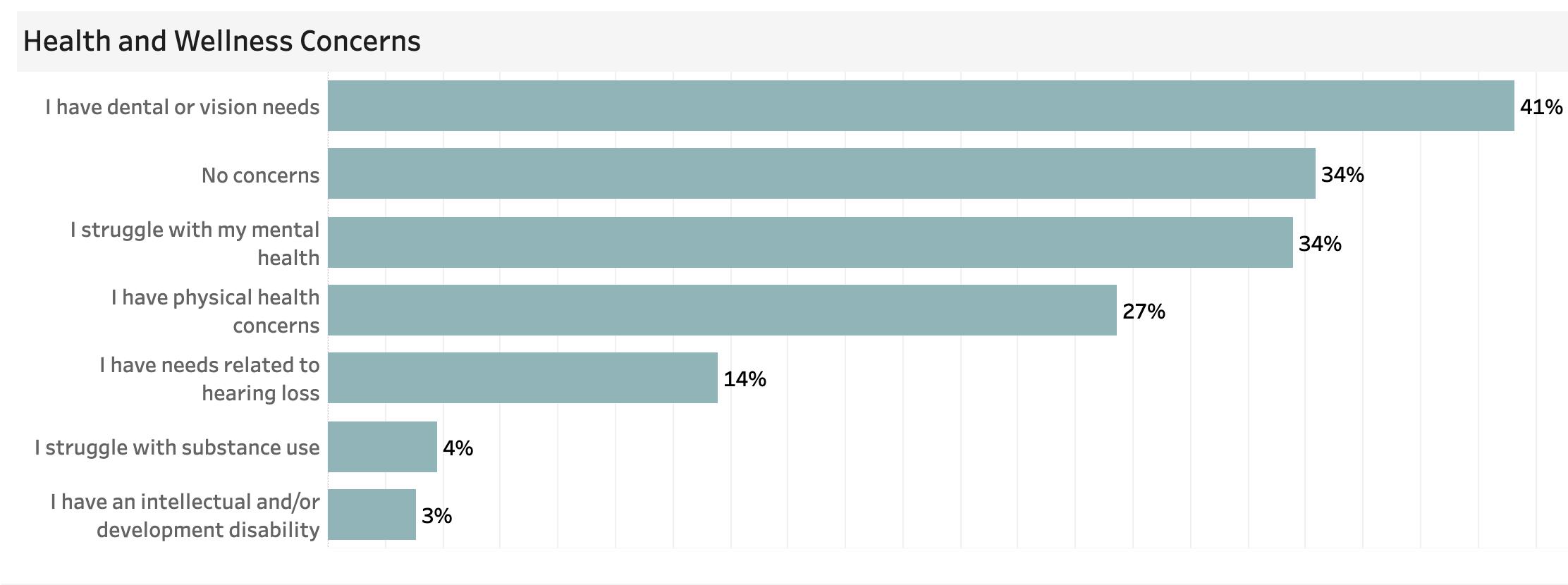
Health and Wellness Concerns - 41% of respondents have dental or vision needs and 34% struggle with mental health While 34% report no concerns, 27% have physical health concerns and 14% have hearing loss needs
Thecostoflivinghereallowsartiststo pursuemusicforlongerthanmostcities, however,becauseofthelimited opportunitiesofbeinginthe Midwest/southernplainsartistshavea ceilingaslongastheystayhere

Wageshavenotgoneupwiththecostof livingafterthepandemic itwasalready difficulttogetpaidforareasonableamountof timeoreffort,butnowit’sevenmoredifficult weneedaffordableorsponsoredplacesto office,rehearse,collaborate,andlearnmore withandaboutourindustry
Pay should be going up, just as the cost of living has.

Creative Career Concerns - The top issues for respondents are the increasing cost of living, with 72% rating it as a high or highest concern, and pay rates not increasing, noted by 65%. Additionally, 55% are highly concerned about the lack of music work. Concerns about not having enough time for creativity affect 46% of respondents, while increasing music-related expenses worry 40%.
Venue/Presenters Rank of Challenges - Talent costs are the highest challenge, with 68% rating it as high Marketing production is another major concern, with 43% indicating it as high Post-COVID fan behavior is a significant issue for 38%, while insurance costs are a challenge for 28% Neighborhood issues affect 16% highly, while competition concerns 32% of respondents Gentrification is a lower concern, with only 10% rating it as high or higher Regulatory costs and compliance time are notable challenges, with 16% and 6% respectively indicating high concern Safety and staffing are also issues, but to a lesser extent
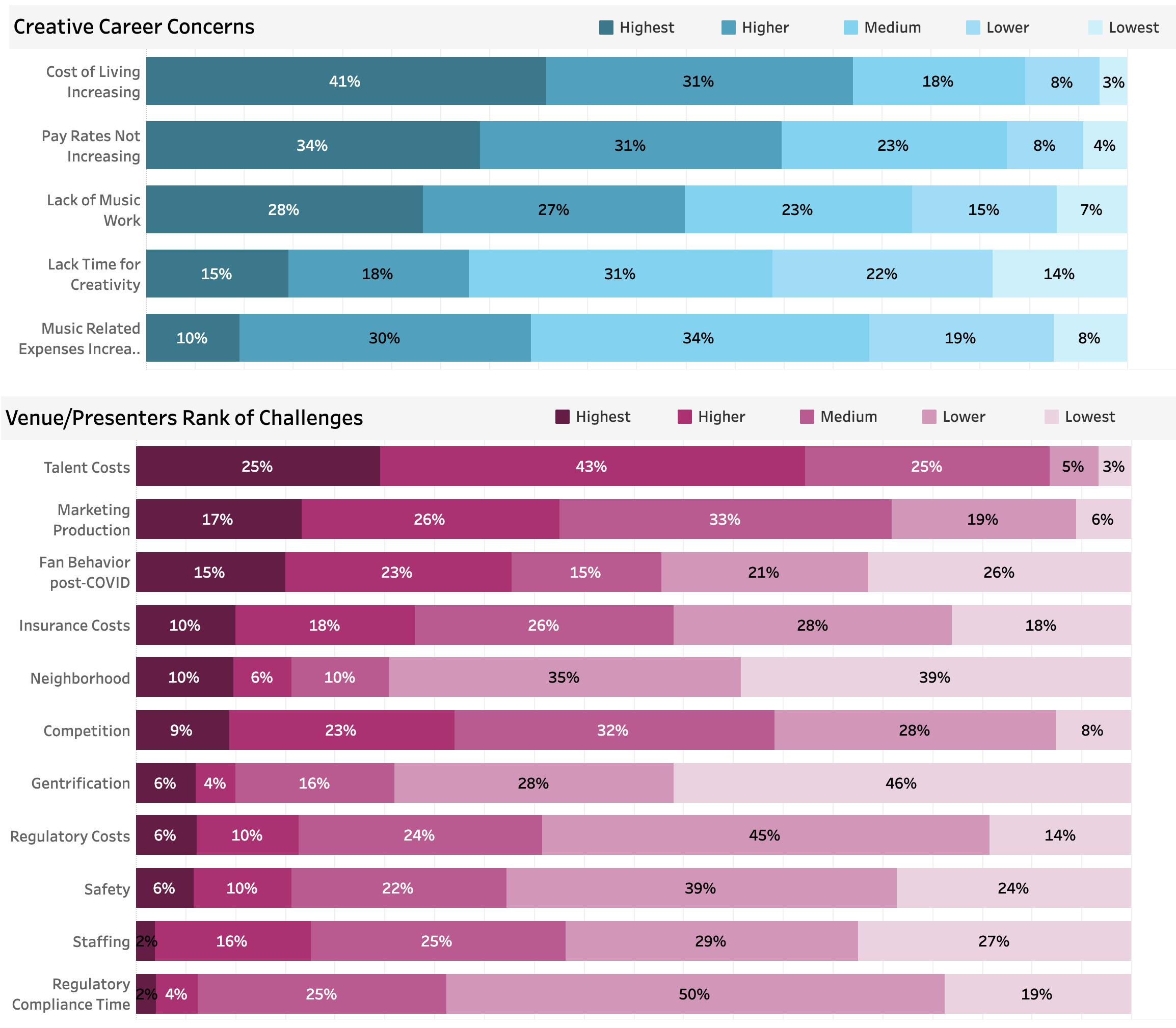


Talent costs and marketing production are significant regulatory challenges for 68% and 43% of respondents, respectively, with additional concerns about post-COVID fan behavior (38%) and insurance costs (28%). Security/public safety (59%), music performance licensing (54%), and live music insurance (53%) are the most frequently encountered regulatory processes. Tax discounts and incentives for live music are highly preferred by 83%, with strong support for a dedicated regulatory webpage (72%) and a government advocate (61%). Financial assistance preferences include micro-grants (61%) and tax breaks (55%), highlighting the need for support in navigating regulatory and financial hurdles.


Regulatory Challenges - Talent costs rank as the highest challenge, with 68% of respondents indicating it as a significant issue. Marketing production is another major concern, with 43% ranking it high. Post-COVID fan behavior and insurance costs are also notable challenges, affecting 38% and 28% of respondents, respectively Regulatory costs and compliance time are highlighted by 16% and 6% of respondents as significant issues Sound policy and inspections are also considered challenges, though to a lesser extent
Regulatory Fluency - Security and public safety are the most frequently encountered regulatory processes for presenting live entertainment, affecting 59% of respondents Music performance licensing (BMI, ASCAP, SESAC) and insurance for live music are also significant, impacting 54% and 53% of respondents, respectively Other notable regulatory processes include special event permitting (47%), street/parking issues (46%), and accessibility/ADA requirements (41%)


Preferences - Respondents show a strong preference for financial assistance through micro-grants with less oversight, favored by 61%. Tax breaks are preferred by 55%, and discounted or no-cost services like tax preparation and legal assistance are appreciated by 44%. Larger grants with more oversight are preferred by 37%, while low-interest loans are favored by 25% A smaller percentage of respondents, 19%, are not interested in financial assistance
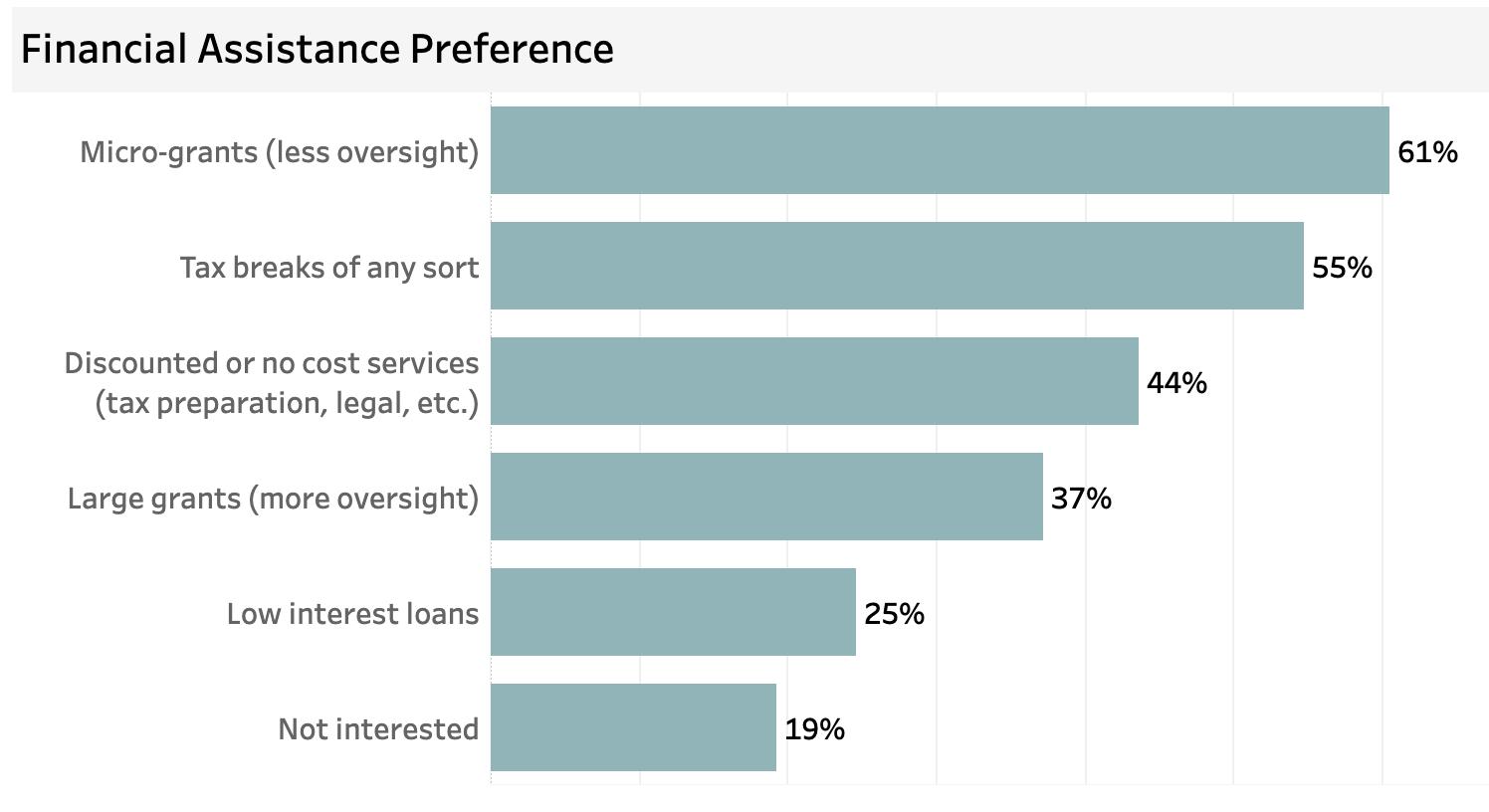
- Tax discounts, waivers, and incentives to host live music are highly preferred by 83% of respondents Additionally, 72% favor a webpage dedicated to current regulations specifically for live music Other preferred tools include having an advocate inside government (61%), an online portal for permitting and communication (61%), and a single point of contact for permitting processes (59%) Annual training sessions and updates from regulatory bodies are also valued by 54% of respondents, and tiered compliance fees based on the scale or type of presentation are favored by 52%.
I wish we had an 'Export Tulsa Music' program or something to provide tour support so we could gain more regional and national recognition.
Itisfrustratingthelawmakesallthe audienceleavethepremisesatlast callortheminutetheshowisover I thinkitwouldbegoodforthe venue’s,theband’s,andthe audience’seconomiclocal ecosystem Beingrushedtoleaveor pushedoutintothestreetdenies everyoneopportunitiestonetwork, meetandgreet,sellmerchor coffee,andasaferandmore responsiblestarttothenextplace someoneisgoing
Weneedmoreall-ages venues,andweneed thestatetosupport thesevenuesorvenues ingeneral Having spacesavailablefor musicwillonlyhelp growourculture The same groups of people are getting the funding and attention



The Tulsa music ecosystem offers mainly positive experiences -- overall, all experiences rank higher than 50% on the positive side. The Tulsa music ecosystem challenges are elitism and ageism. The Tulsa music ecosystem’s greatest strengths are that it is nonhomophobic, safe, and inclusive.

Please see the online dashboard at www.VisitTulsa.com for full data on each indicator by subgroup. Some overarching themes to the subgroups are:
Negative experiences - While respondent representation was low from both of these categories, those who identify as Black, African, or African American People and those who identify as Asian or Asian American tend to experience the most negative (red) side of the Tulsa music ecosystem.
The diversity and inclusivity. Tulsa has a lot of great folk and country artists, but also has everything from hip hop to jazz clubs. Also, great late-night dance spaces for EDM
The level of inclusivity, and the vast talent pool There’s so much great art in Tulsa and it seems like everyone is very willing to work together on projects

Tulsa needs more women and queer people representing the music community because we are here and devoted to our craft
Moreinclusivitywouldbe themostimportantthing tofocuson
The boys club. Venues… keep booking the same men over and over again. The music scene comes across as exclusive and elitist which turns people away.

Economic Concerns: Increasing cost of living and stagnant pay rates are significant concerns for Tulsa's music community Many professionals face financial instability, with housing costs and affordability being major issues
Community Composition: The Tulsa music ecosystem is predominantly composed of Music Creatives (69%), followed by Industry professionals (21%) and Venue/Presenter operators (10%) This highlights a strong creative presence with substantial industry support
Experience Levels: The Music Creative sector is largely composed of experienced professionals with over 10 years in the industry, indicating a mature workforce. However, there's a need to attract and nurture new talent across all sectors.
Performance Opportunities: Tulsa's music community needs more performance opportunities in general and with Venue/Presenters averaging roughly one performance/week it seems there is room to grow. Tulsa also needs more diverse and affordable performance venues. Smaller and non-bar venues are particularly needed to provide more opportunities for local musicians.
Professional Development: There is a high demand for training in booking, event production, marketing strategies, and audio/video recording. Improved networking opportunities and resources for professional growth are also essential
Venue/Presenter Barriers: Talent costs, marketing production, and post-COVID fan behavior are significant market challenges Simplified and more efficient regulatory processes, including better sound policies and permit management, are necessary
Financial Assistance: Financial support is a critical need, with strong preferences for micro-grants, tax breaks, and discounted services These measures could help alleviate the economic pressures faced by the music community
Health and Safety Preferences: A significant majority of respondents (76%) prefer smoke-free environments. Additionally, health insurance coverage is an essential aspect of livability, with many relying on employer-provided or government programs and 22% uninsured.
Inclusivity and Diversity: There is a call for more inclusivity and representation within Tulsa's music scene. The community values diversity and seeks to involve more women, queer individuals, and
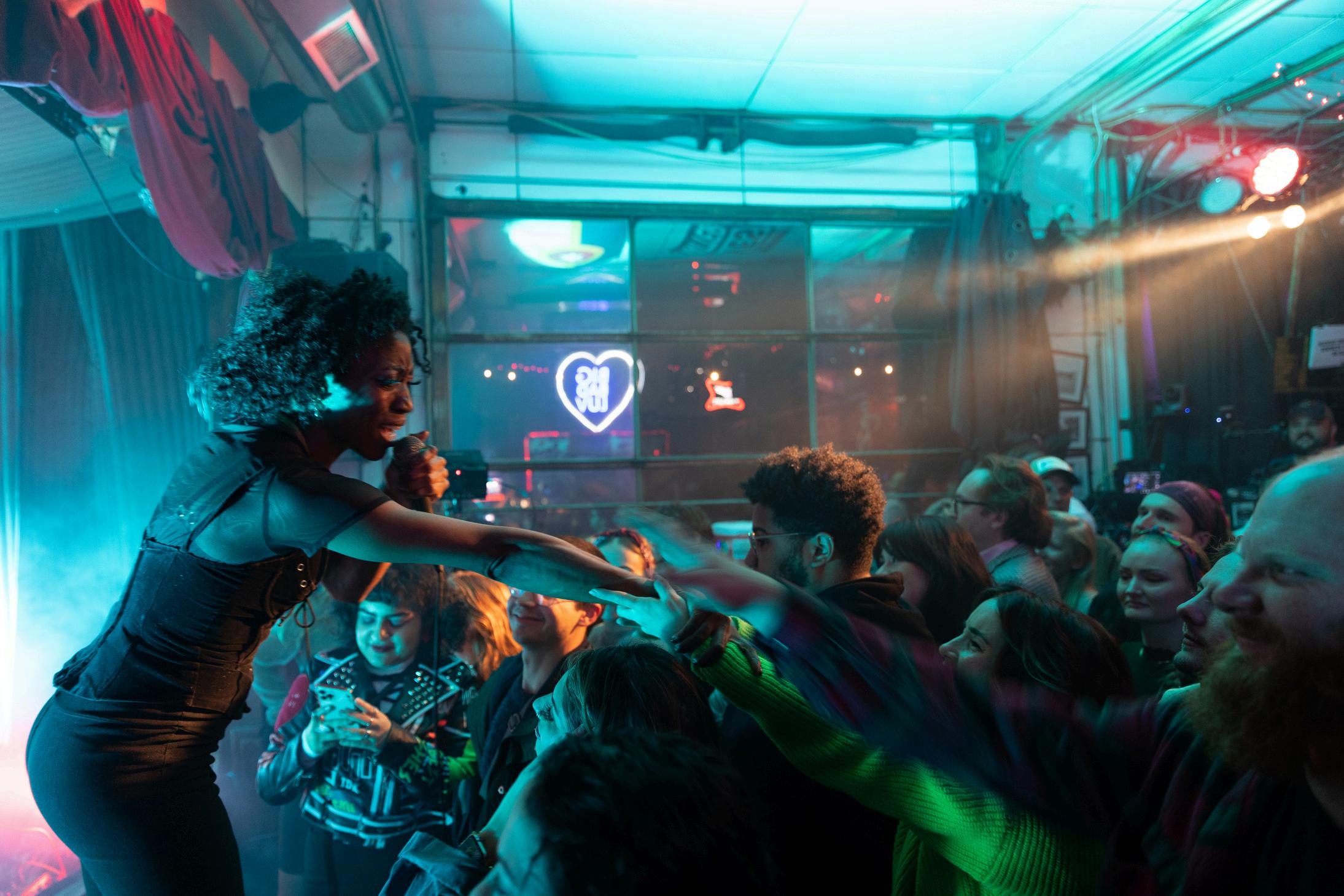

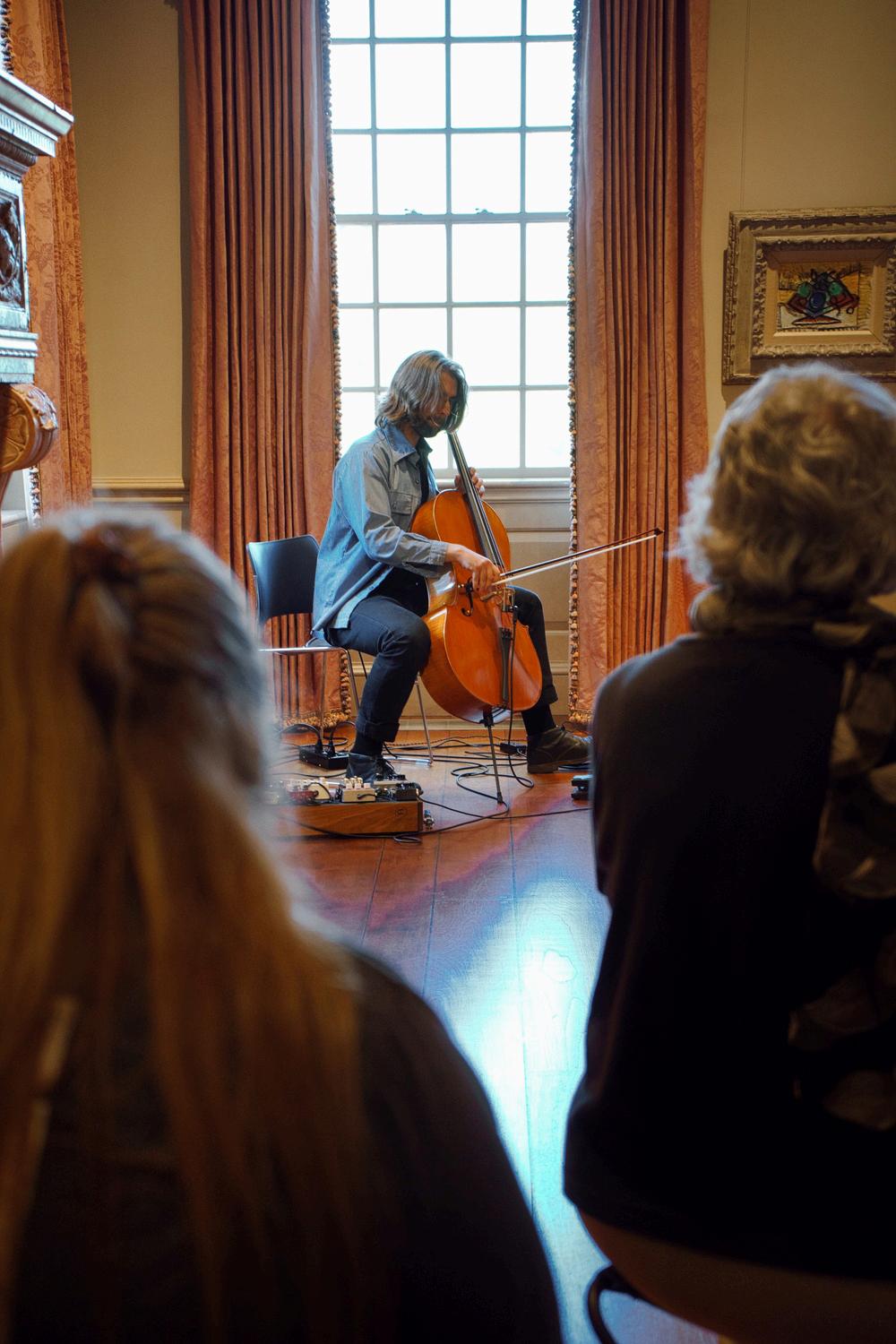
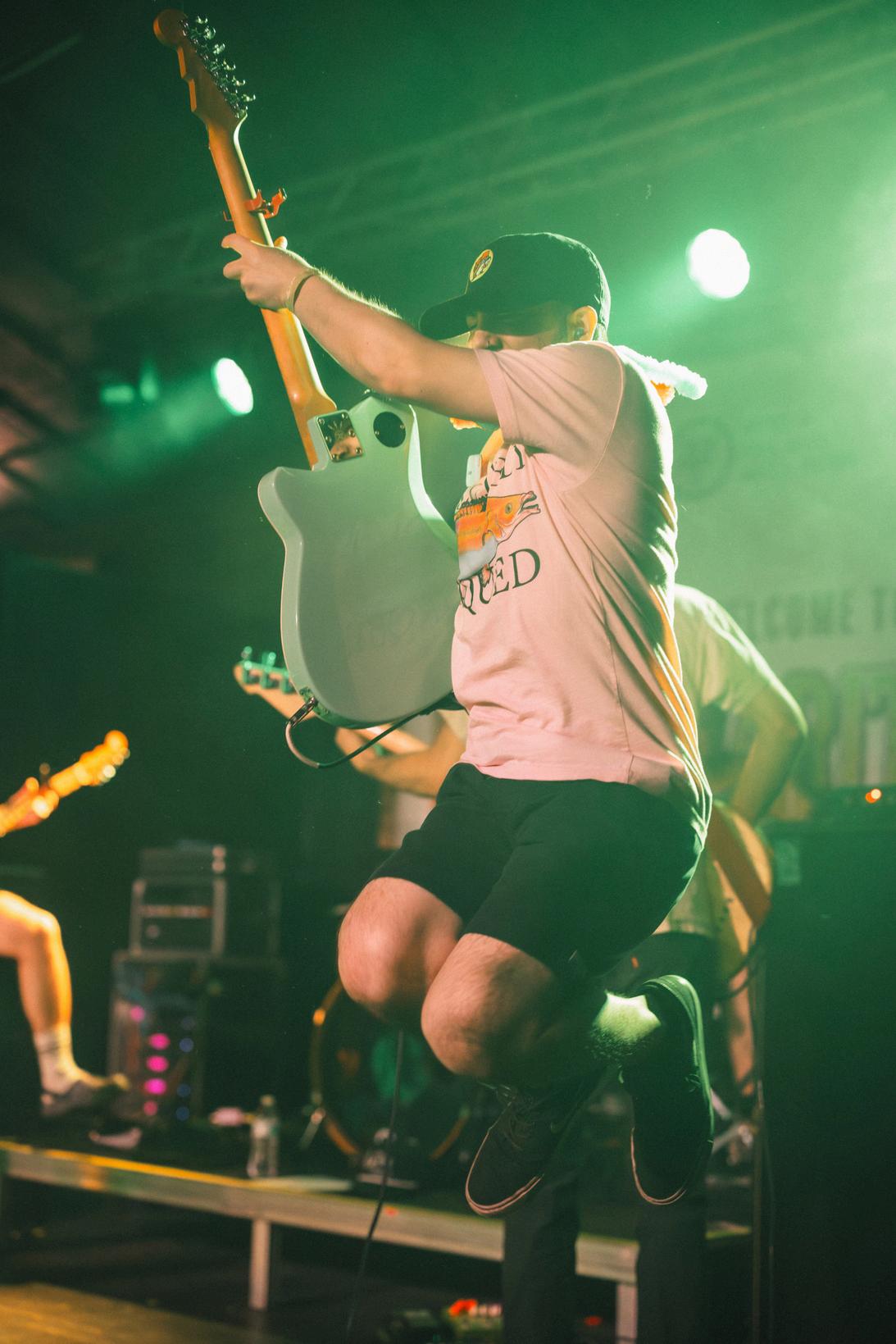

Foster Economic Stability for Music Creatives: Support initiatives that improve pay rates, equalize pay rates and performance opportunities, and diversify revenue streams to bring more economic stability for all music professionals, addressing the high cost of living and financial challenges.
Enhance Professional Development Programs: Offer training in booking, event production, marketing, and audio/video recording, alongside improved networking opportunities.
Simplify Regulatory Processes: Address challenges related to sound policies, and permit management through streamlined regulatory frameworks.
Increase Financial Support: Provide micro-grants, tax breaks, and discounted services to alleviate financial pressures on the music community
Promote and Sustain Inclusivity: Continue to foster an inclusive environment by involving more women and underrepresented groups
Strengthen Health and Safety Measures: Ensure more venues are smoke-free and improve access to health insurance, vision services, and dental services for music professionals
Support Housing Stability: Address housing affordability issues by advocating for policies that support lower housing costs for creatives.
Boost Local and National Recognition: Develop programs to increase the visibility of Tulsa's music scene locally and nationally, potentially through an "Export Tulsa Music" initiative. Increase local performance opportunities at existing venues and public spaces.
Create a Central Hub: Establish a centralized communication and support hub (likely virtual) for the music community and other creative sectors to enhance collaboration and resource sharing.

